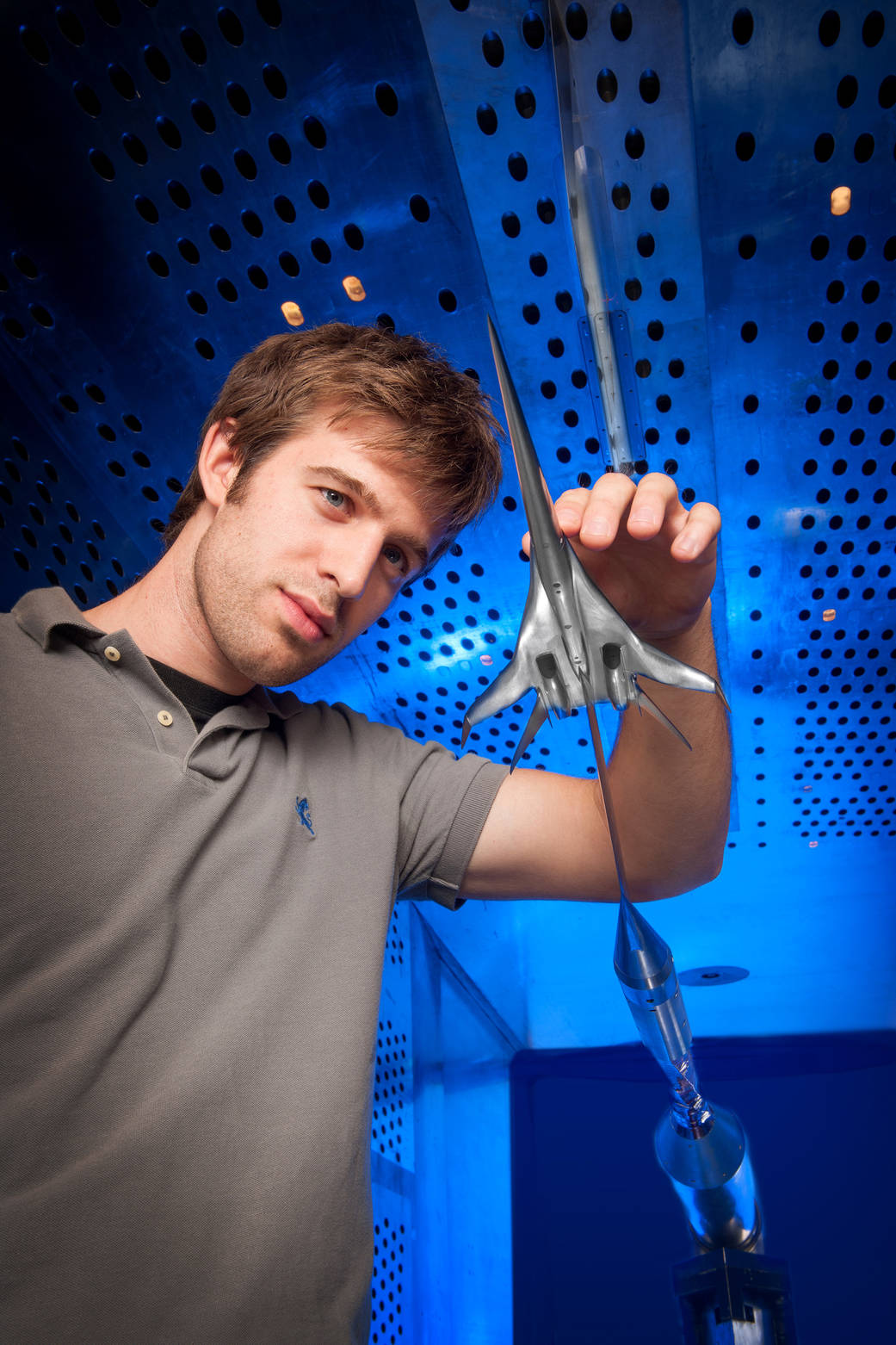
If human beings are ever to fly faster than the speed of sound from one side of the country to another, we first have to figure out how to reduce the level of sonic boom generated by supersonic flight.
Earlier this fall, a subscale model of a potential future low-boom supersonic aircraft designed by The Boeing Company was installed for testing in the 8- by 6-Foot supersonic wind tunnel at NASA’s Glenn Research Center in Cleveland.
In the photo, Kyle Webster checks that the model is correctly installed. This model, the smaller of two used in the tests, was used to capture measurements of the off-body pressures that create sonic boom. The model is actually upside down. Depending on the type of test and on the tunnel, the model can be oriented either way.
Another model built large enough to house a force measurement balance was used to capture force measurements (lift, drag).
The tests are among those being conducted by NASA and its partners to identify technologies and designs to achieve a level of sonic boom so low that it barely registers on buildings and people below.› Read More

























